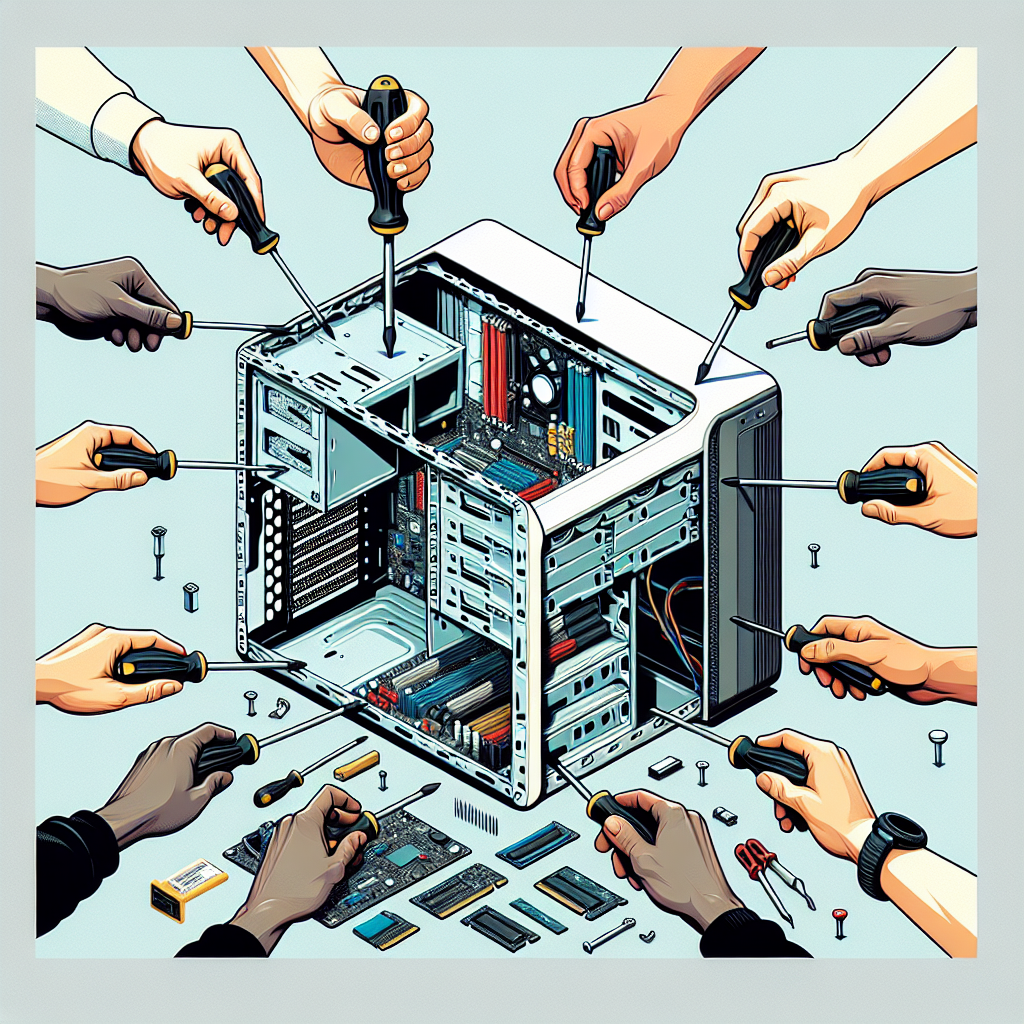Introduction
Opening your computer can be a daunting task, especially if you’re new to the process. Whether you need to upgrade your hardware, clean the internal components, or troubleshoot an issue, knowing how to safely open your computer case is an essential skill. This guide will walk you through the steps to open your computer case securely and effectively.
Tools Required
Before you start, gather the necessary tools. Here’s a table outlining the essential tools you’ll need:
| Tool | Purpose |
|---|---|
| Phillips Head Screwdriver | To remove screws |
| Anti-static Wrist Strap | To prevent static discharge |
| Canned Air | To blow out dust |
| Plastic Pry Tools | To remove panels without damage |
Preparation Steps
- Turn off and Unplug: Ensure your computer is turned off and unplugged from the power source.
- Ground Yourself: Use an anti-static wrist strap to ground yourself before touching any internal components.
- Clear Workspace: Choose a clean, flat, and static-free surface to work on.
Step-by-Step Guide to Opening Your Computer Case
1. Identify the Case Type
There are various types of computer cases, such as ATX, MicroATX, or Mini-ITX. Identifying your case type can help you understand how to open it.
2. Locate and Remove Screws
Most computer cases have screws located at the back. Using a Phillips head screwdriver, carefully remove these screws and place them in a safe spot.
3. Remove the Side Panel
Once the screws are removed, slide or lift the side panel off according to your case’s design. Some cases may have a latch or button mechanism.
4. Unclip or Unscrew the Front Panel
If you need to access the front of the case, you might have to unclip or unscrew the front panel. This can vary based on the case manufacturer.
Types of Computer Cases and Their Opening Mechanisms
Different computer cases have varying mechanisms for opening. Here’s a brief overview:
- ATX: Typically has screws at the back which allow the side panels to slide off.
- MicroATX: Often similar to ATX but smaller, with either screws or latches.
- Mini-ITX: These compact cases often have unique designs requiring a mix of screws and clips.
Safety Tips
- Handle with Care: Internal components are delicate and easily damaged.
- Use Anti-static Measures: Always ground yourself to avoid static electricity damaging the components.
- Be Organized: Keep screws and other small parts in a container to avoid losing them.
Common Issues and Troubleshooting
Sometimes, even with all the precautions, you might face issues. Here are a few common problems and their solutions:
- Panel Stuck: Check for hidden screws or clips you might have missed.
- Static Discharge: Always use an anti-static wrist strap.
- Lost Screws: Have a replacement set of screws handy.
Conclusion
Opening a computer case is a manageable task if done with care and the right tools. By following this guide, you can confidently access your computer’s internal components for upgrades, cleaning, or troubleshooting. Always remember to work safely and methodically to avoid damaging any components.
Additional Resources
For more detailed information, consider the manufacturer’s manual for your specific computer model or seek online video tutorials that offer visual step-by-step guidance.

